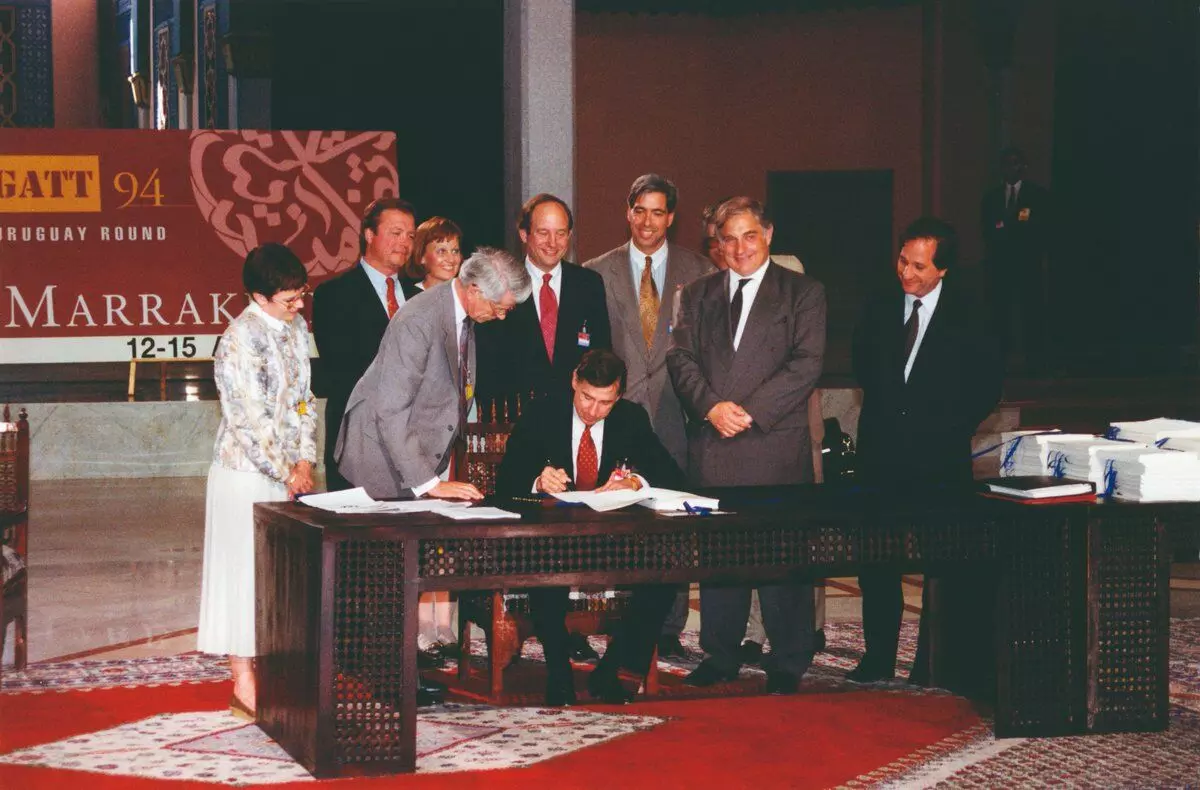Transformative vision amid enduring trials
In part one of this two-part article, it is discussed that against a host of challenges continuing from the Tokyo Round, the Uruguay Round set out for ambitious outcomes in the domain of industrial tariffs, agriculture trade, non-tariff barriers, textile & clothing etc., while reconciliation of RTAs with GATT rules and absence of anti-dumping measures remained sore points

The Tokyo Round ended in 1979 and the tariff cuts agreed therein were to be spread over eight years. In 1986, when the Tokyo Round concessions were tapering off, global trade was facing other challenges: US tariffs were rising, trade in agricultural goods and textiles & clothing was out of GATT’s ambit, domestic subsidies were increasing and there was no way to limit them, Japan and other fast growing Asian economies were being subjected to anti-dumping tariffs by the US and EC. Even though a number of codes to reduce non-tariff barriers had been introduced in the Tokyo Round, these had little impact. The Uruguay Round was launched in the face of these challenges in Punta del Este in 1986.
Main features
In 1986, the EC was more focused on liberalising intra-EU trade as well as services trade. The US, on the other hand, was more interested in a GATT round for two reasons: the financial services industry wanted to frame rules to liberalise services trade and the intellectual property proponents in the pharma, information technology and the recoding industries wanted rules to protect innovation. Another factor in the US was to deflect the pressure away from the US Congress’ efforts to impose trade restrictions across the board on imports from Japan.
As it turned out, the Uruguay Round outcomes were quite ambitious:
* Industrial tariffs: These were to be cut by a third over ten years. This move wasn’t going to impact the developed countries much because of the progressive tariff cutting undertaken by them in the earlier rounds. As a result, the average tariff in developed countries was very low. However, tariff levels in developing countries were still high, with average tariff levels as high as 50 per cent in many sectors. However, few developing countries took any appreciable tariff cuts.
* Agriculture trade: There were three areas in agriculture trade that were agreed upon — all non-tariff barriers to be converted into tariffs to ensure better market access, government support to agriculture to be cut by 36 per cent over six years and export subsidies to agriculture to fall by 36 per cent. On government support to agriculture, the main issue was that the base year chosen was one where government support was historically high, meaning that the effective cuts in government support would be minimal. While the Agreement on Agriculture got agricultural trade into the ambit of GATT rules, there were limitations as well. The GATT rules applied only to the commitments on domestic support and export subsidies taken by the countries, and these tended to be modest in many cases. The Agreement on Agriculture also mandated members to convert non-tariff barriers into tariffs, but many countries set high tariffs in doing so, defeating the purpose of such conversion.
* Non-tariff barriers: Many non-tariff barriers have been used, mainly by the US and EC, such as ‘voluntary restraint arrangements’ and ‘orderly marketing arrangements’ in electronic goods, automobiles and steel markets. It was agreed that these would be phased out. Further, the non-tariff barriers in agriculture would be converted into tariffs and the US would surrender its formal authority, which allowed it to derogate from GATT rules in agricultural trade. In textiles and clothing, quotas would be converted into tariff-quotas and the Multi-Fiber Agreement would be phased out over a period of ten years. (Tariff quotas allow a certain quantity of the goods to be imported at a lower tariff level).
* Textiles and clothing: As referred to above, a major outcome of the Uruguay Round was the disbanding of the Multi-Fiber Agreement, which we have discussed in greater detail in an earlier article. The MFA was to be phased out in four phases spread over ten years, beginning from January 1, 1995.
* Dispute settlement: The Dispute Settlement mechanism was strengthened so that all parties, howsoever powerful and big, would have to abide by the findings of the ‘Court’.
* Agreement on technical barriers to trade: This built on the work done in the Tokyo Round. The basic purpose remained the same: that technical specifications and certifications should not act as barriers to trade. Furthermore, there was an effort towards the harmonisation of international standards.
* Trade policy reviews: A forum to review the trade policy of all members was created in the Uruguay Round, where the secretariat would table the various trade measures taken by the member and decide whether these were in conformity with GATT rules and the commitments taken by the members. This was a useful forum where members would be ‘named and shamed’ if they indulged in practices contrary to GATT rules.
* Weaknesses: Some areas of concern remained, namely how to reconcile Regional Trade Arrangements (RTAs) with the free trade spirit of GATT rules, and absence of progress on developing rules on Anti-Dumping. While GATT rules allow the formation of RTAs, they also require that trade restrictions between RTA members and other GATT members don’t increase. However, these two objectives are inherently contradictory and GATT continues to struggle with how to deal with RTAs. Similarly, the problem of Anti-Dumping continues and is a threat to genuine free and fair trade.
To be continued on Next Sunday…
The writer is Additional Chief Secretary, Department of Mass Education Extension and Library Services and Department of Cooperation, Government of West Bengal.




